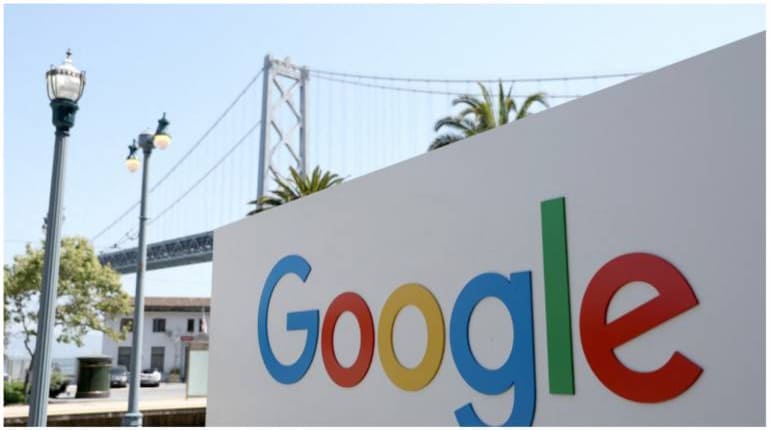



Google will commence its arguments this week in the National Company Law Appellate Tribunal (NCLAT) in its appeal against the Competition Commission of India (CCI) order holding that it abused its dominant position in the Android ecosystem.
NCLAT will start hearing the case on February 15. While now at the tribunal, the case was before the Supreme Court in January, which directed the tribunal to adjudicate the case by March 31, 2023.
Moneycontrol recaps why Google was penalised and how the litigation travelled from CCI to NCLAT to Supreme Court and back to NCLAT.
Why did CCI penalise Google?In 2018, Android users alleged before CCI that Google was abusing its dominant position in the mobile operating system-related market in contravention of the provisions of the Competition Act, 2022.
It was alleged that Google asking device manufacturers to preinstall the entire Google Mobile Services (GMS) suite under its Mobile Application Distribution Agreement (MADA) is an unfair condition. The GMS suite includes apps such as Chrome, Gmail, search and others.
The CCI in 2019 expressed a prima facie opinion that mandatory preinstallation of the entire GMS suite under MADA amounted to the imposition of unfair conditions on device manufacturers.
The CCI ordered the director general (DG) of its investigative arm to look into the allegations against Google.
On October 20, 2022, the CCI, based on the DG’s report and other documents filed by both sides, concluded that Google was indeed abusing its dominant position in multiple markets in the Android mobile device ecosystem and ordered the company to pay a penalty of Rs 1,337.76 crore.

The CCI held that Google can neither force original equipment manufacturers (OEMs) of smart devices to preinstall its apps nor restrict users from uninstalling such apps. Furthermore, it asked the US-based company not to offer any incentives to OEMs to comply with its conditions.
Google’s appeal to NCLATGoogle appealed against this order before the NCLAT, alleging that antitrust investigators copied parts of a European ruling against it for abusing the market dominance of its Android operating system.
The US-based company sought a stay of the CCI’s order stating it would stall the Android ecosystem in India and also contended that the order asks the company to change the way Android is marketed in India.
The NCLAT declined the company’s appeal to stay the order and posted it for a final hearing in April.
The tech giant challenged this order in the Supreme Court and sought an interim stay on the order.
Supreme Court declines to stay CCI’s orderThe Supreme Court on January 19 declined to stay the CCI order but extended the tech giant's time to comply with the order by a week. It also asked the NCLAT to dispose of the case by March 31.
The apex court noted that it was not evaluating the case on merit, as any expression of opinion would affect the proceedings going forward. The court also observed that the findings of CCI cannot be held at the interim order stage to be suffering from manifest error.
Google approached the NCLAT on January 30 to fix dates for hearing the case on merits. The NCLAT agreed to hear the case from February 15 to 17. Google is expected to start its arguments in the case on February 15.
What have Google and CCI argued so far?In the SC, Google argued that the CCI order was unfair on the following grounds:
- Android is an open-source system with over 15,000 models, 1,500 device manufacturers and 500 million devices just in India
- MADA is a voluntary agreement between Google and device manufacturers to enhance the user experience and, hence, it was not imposing any unfair conditions
- Changing the Android ecosystem after almost 15 years will increase the cost of devices.
The CCI countered Google’s argument by stating:
- MADA deprives consumers of the choice to choose non-Google apps, thereby not allowing other apps with similar or better features to grow
- MADA is not free or voluntary as the marketability of the devices comes down significantly if these apps do not feature in them
- Pre-installation of apps creates a behavioral bias and Google uses it for marketing.
MapmyIndia, an Indian technology company that builds digital maps, argued that despite having been established in 1995, and offering its consumer a mapping app since 2004, the company has a market share in the consumer maps app space of just 0.5 percent in India owing to Google’s anti-competitive practices.
Will Indian app makers benefit from CCI’s ruling?Rohan Varma, CEO and executive director of MapmyIndia, said, “The CCI findings show how Indian indigenous apps have been suppressed, and that is the reason most Indians haven’t been able to access and use the better, more local Indian apps. We hope this is the start of a change in momentum from the last 15 years. Indians and the Indian ecosystem can prosper far more than they were able to thus far.”
Rameesh Kailasam is the president and CEO of IndiaTech.org, a think tank and industry group set up by Indian startup founders and funds for supporting internet-based startups. He said, “Once there is democratisation of access, more developers may build apps with the same or even superior functionalities as Google. Right now, due to bundling, choices are limited to use other apps. If the order is implemented in letter and spirit, users’ choices and comfort will decide future evolution and usage, but for that to happen there must be choice, freedom and access.”
Discover the latest Business News, Sensex, and Nifty updates. Obtain Personal Finance insights, tax queries, and expert opinions on Moneycontrol or download the Moneycontrol App to stay updated!
Find the best of Al News in one place, specially curated for you every weekend.
Stay on top of the latest tech trends and biggest startup news.